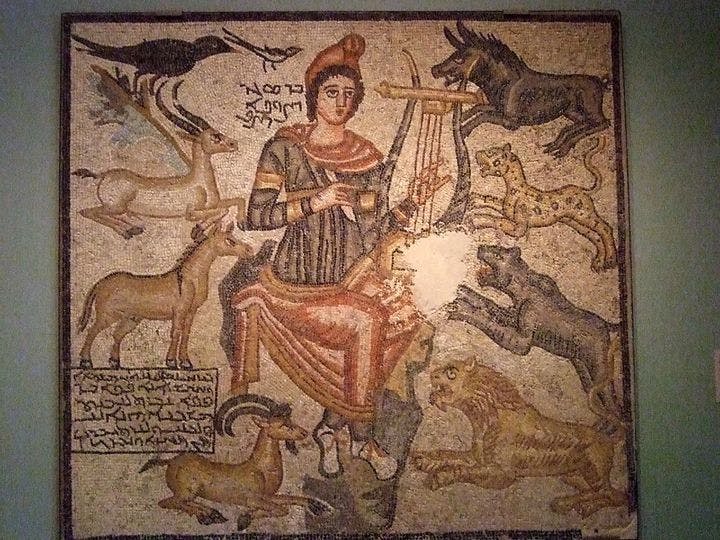Winter 2012
Mythical City: Rome In Our Imagination
– Andrew Curry
Ancient Rome in reality: flimsy apartments, streets strewn with human excrement, garbage, and the occasional corpse.
Rome has had an influence like that of no other city. Its 2,500 years of unbroken history make Paris and London seem like recent arrivals. In Rome, Robert Hughes gives a thorough account of the Eternal City’s history and its influence on two millennia’s worth of artists, architects, and writers. A former art critic for Time and the author of books on subjects as diverse as Barcelona, Australia, and modern art, Hughes was first awed by Bernini’s fountains at the Piazza Navona a half-century ago. He sees traces of Rome just about everywhere, from the works of Goethe to Manhattan’s original Pennsylvania Station.
The ancient Rome of our imagination—and as conjured by the sculptors and painters Rome has attracted for millennia—is a pristine marble sculpture garden populated by orators in clean togas. The reality was more like “Calcutta-on-the-Mediterranean,” Hughes writes, “crowded, chaotic, and filthy.” Flimsy apartment buildings lined streets strewn with human and animal excrement, garbage, and the occasional corpse. Residents commonly hurled full chamber pots out the window, braining anyone unlucky enough to be passing below.
Yet rising among the slums were astounding feats of engineering that still inspire, including the Coliseum, the Pantheon, and the monuments of the Forum. Others, just as spectacular, are lost: The Circus Maximus, now buried under modern Rome, had seats for 250,000 spectators, who crowded in to watch charioteers careen around a mile-long course, of greater length than some NASCAR tracks.
Hughes can be an overeager tour guide. It’s fascinating that the Pantheon’s dome—whose diameter exceeds St. Peter’s by a few feet—was made possible by the pioneering use of concrete, but do we really need to know the precise thickness of its walls at the top and the bottom? As a short course in the stories behind the art and architecture of Rome, though, the book is useful and often entertaining.
Rome survived the fall of the Roman Empire, but just barely. By ad 1000, centuries of plunder and scavenging had rendered the imperial capital nearly unrecognizable. Romans themselves did much of the damage—stealing or selling off ancient statuary, melting down bronzes, and burning marble statues and friezes to make lime for building mortar. In the 15th century, the once glorious Forum was being used mainly as a cow pasture.
Beginning in medieval times, however, the city underwent wave after wave of rediscovery and re-creation. Dozens of Roman churches, St. Peter’s among them, are built with marble recycled from ancient Roman structures. During the Renaissance, Italian artists flocked to the city, accepting commissions from popes and cardinals to give the wealth of the Roman Catholic Church physical form.
The art of the Renaissance, in turn, made Rome an essential stop on the “grand tour” popular with educated Europeans. Like tourists today, they were often disappointed. “The streets are narrow, dirty, and filthy. Even the palaces are a mixture of dirt and finery and intermixed with wretched mean houses,” one English visitor wrote. Even while sniffing at their hosts, travelers took inspiration—and plenty of art, real and forged—home as a souvenir, spreading a taste for classical architecture and enriching museum collections around the world.
Rome endured, and continued to reinvent itself. It became the capital of a reunited Italy in 1871, then the seat of Fascist dictator Benito Mussolini’s power in the 1920s before welcoming American troops as liberators in 1944. Throughout, its power to lure art lovers such as Hughes never diminished.
But in an angry epilogue, Hughes laments the death of high culture in Italy. The combination of mass tourism and Italian apathy, he contends, threatens the city’s heritage. “Most Italians are artistic illiterates,” he writes. “They like to invoke the splendors of their patrimonio culturale, but when it comes to doing anything about them, like turning their considerable energies toward preserving that inheritance in an intelligible way . . . nothing or little happens.”
Yet how much has really changed? Even at the empire’s peak, most Romans were more interested in gladiator bouts and chariot races than in sculpture and poetry. And recent archaeological discoveries reveal that the refined white statuary that inspired Renaissance artists is yet another instance of modern mythologizing: The Romans painted their marble, often in garish colors that would make a clown wince. If there’s a lesson to be learned, it’s that the Eternal City will survive, somehow, to be creatively remembered by future generations.
* * *
Andrew Curry is a freelance journalist based in Berlin and a contributing editor to Archaeology.
Reviewed: "Rome: A Cultural, Visual, and Personal History" by Robert Hughes, Knopf, 2011.
Photo courtesy of Flickr/Mary Harrsch
